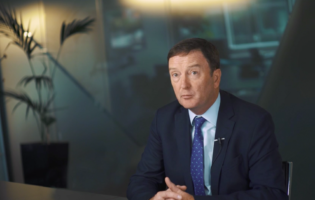Investment Outlook - Market Update

We have since Autumn 2020 forecast that a material ‘regime change’ lay ahead for global investors. A new regime that is materially different and more challenging to that experienced over the previous decade, a decade of extremely ‘easy’ monetary conditions and the associated bull market in all ‘risk’ assets and perhaps the riskier the better! At the core of regime change was our premise that new winners would emerge and that previous winners would be the new losers etc. And so, it has generally proven. We however, experienced a marked reversal during the first quarter of 2023 with a return to the behaviours of the old regime, expecting easy monetary conditions and friendly central banks This we believe will prove to be temporary. We expect markets will rotate again as economic fundamentals once again reassert themselves over coming quarters.
The market today appears to be anticipating a return to the ‘happier’ regime of 2019-2021, with rates falling near to zero again while tech stocks once again having re-rated and currently trading at premium earnings multiples. This at a time where increasingly we are seeing profit warnings and job lay-offs from technology companies worldwide. This flip flop from quarter to quarter between winners and losers may well continue for a while, but as with 2022, we expect that patience and fundamentals will once again prevail for 2023. As we enter the second quarter, we fear that once again large elements of the market are once again set up for disappointment.
From a macro perspective we are undoubtedly late cycle however this economic cycle has proven itself more resilient than consensus expected from both an inflation and economic growth perspective. We expect inflation to remain stickier than the consensus hopes for, not least considering the strength of underlying labour markets and associated wage pressures worldwide. Based on our core belief that current banking issues are idiosyncratic and not systemic, we expect that markets will once again be forced to re-price higher interest rate expectations. This reality check will be a negative shock for both bonds and in particular equities that behave like long duration assets, such as expensive mega-cap technology stocks. Our expected environment is for stubborn core inflation (as distinct from drops in headline inflation), higher interest rates and eventually lower economic growth. Against this background, equity and bond markets will struggle to make progress we believe.
The KBI investment team remain vigilant, focusing on both our top-down macro analysis and in particular a focus on bottom-up company analysis. While expecting the global market environment to remain uncertain and volatile, we will maintain a focus on building balanced portfolios with a mindset towards downside protection, as was the case during 2022.
Asset class outlook:
Equities
At an aggregate valuation equity markets are cheaper than 12-months ago, closer to and in some cases cheaper than historic averages, but by no means compelling value. Risks, we believe are to the downside with respect to consensus earnings forecasts for 2023.
As highlighted in previous quarterly updates, stock and sector winners have themselves been volatile from quarter to quarter as the market has ‘flip-flopped’ between its own optimistic and pessimistic moods. Looking ahead, we believe that while top-down has dominated much of the market behaviour over recent quarters, that bottom-up company performance will be once again the material driver of performance over coming quarters. This market environment should continue to reward active stock picking and portfolio management
During the most recent quarter, the market has rotated back to ‘hopeful winners’ rather than those better underpinned by reality in our view. We believe that the rotation that started during late 2020, will once again resume favouring for example, value rather than growth stocks and sectors as well as higher dividend paying ones.
Bonds
Bonds as an asset class having experienced their worst year since 2008 during 2022, have rallied during recent months. They benefitted from a flight to safety from banking sector worries, as investors feared systemic banking failure and simultaneously a belief that inflation and interest rates have peaked and that rate cuts will commence in the US this coming summer!!
We remain in the higher for longer camp with respect to interest rate expectations. Even if rates have peaked, the regime has changed. We believe bonds remain relatively poor value and while yields have risen materially since 2021, they have done so from historically low levels and may rise further driven by sticky inflation and as rosy expectations for near term interest rate cuts once again deteriorate.
Risk wise, we are monitoring corporate bond markets for any signs of distress at a company or indeed sectoral level, as the cost of funding has increased sharply and a less positive economic growth outlook lies ahead .




